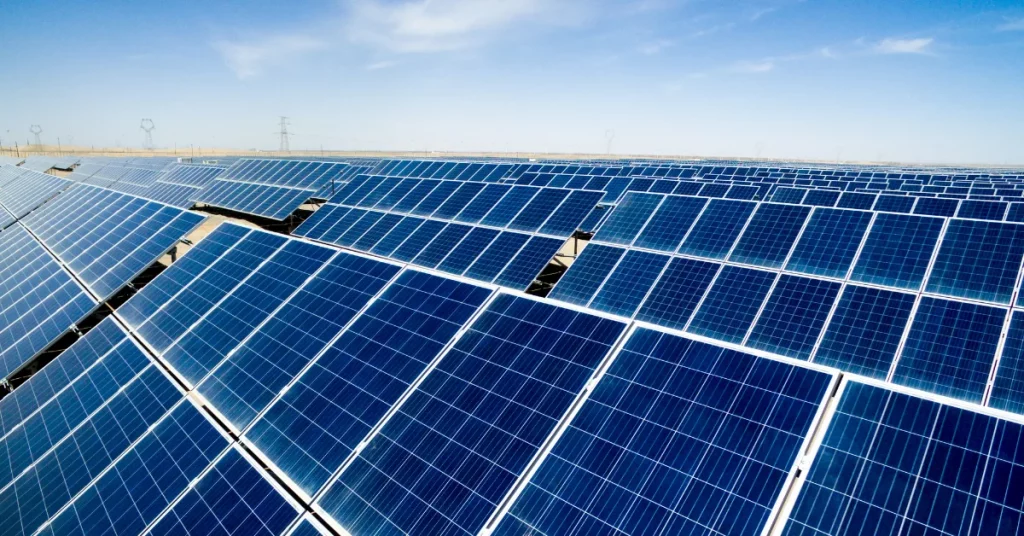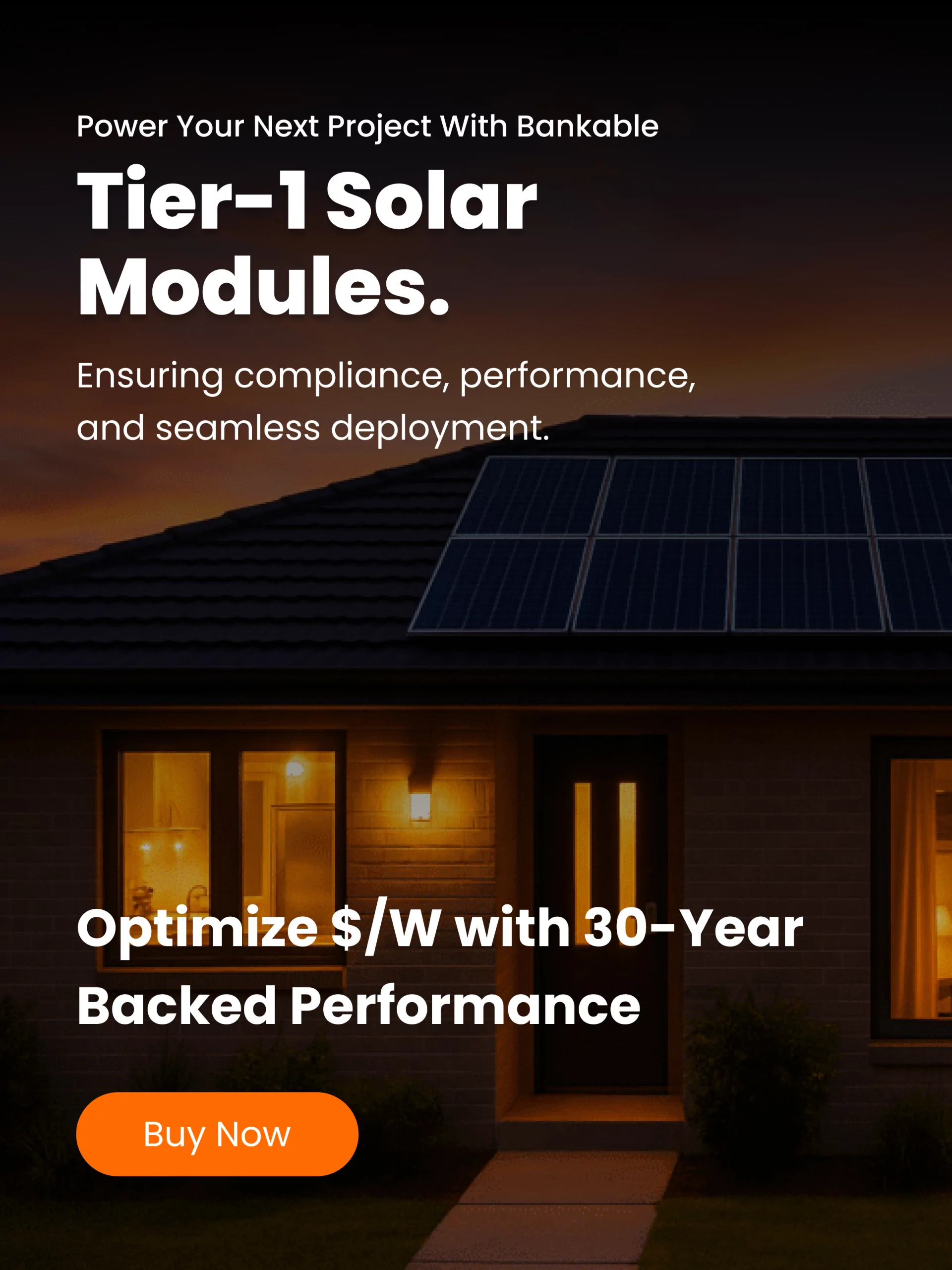As solar energy deployment continues to accelerate worldwide, the role of solar trackers has become increasingly important. Solar trackers are mounting systems that orient photovoltaic (PV) panels toward the sun to increase the amount of sunlight captured and therefore improve energy production. Among the most common are single-axis trackers, which rotate on one axis, and dual-axis trackers, which rotate on two axes for more precise tracking. In this article we’ll explore how the solar tracker market is evolving, what drives growth, the difference between tracker types, and which companies are leading the charge.
What are single-axis and dual-axis solar trackers
Single-axis trackers
A single-axis solar tracker rotates panels along a single axis, typically from east to west during the day. This allows panels to follow the sun’s path across the sky and generate more electricity compared to fixed-tilt systems. Studies show that single-axis trackers can increase energy yield by roughly 20-30% in many cases, though actual gains vary depending on location, shading, and system design.
Dual-axis trackers
Dual-axis trackers add a second axis of movement (for example north-south tilt or seasonal adjustment) to further align the panels with the sun’s position throughout year. Because they follow the sun more precisely, they often deliver higher energy yields, especially in locations with high sun-angle changes over the year. According to a recent review, dual-axis trackers can outperform fixed-tilt systems by 12 % to 30 % depending on site conditions.
While dual-axis trackers offer more yield, they also come with higher complexity, cost and maintenance than simpler single-axis systems.
Market size, growth and segmentation
The global market for solar tracking systems is growing rapidly. Recent industry data suggest the tracker market was valued around USD 7.9 billion in 2023 and is projected to reach approximately USD 25 billion by 2032, representing a compound annual growth rate (CAGR) of ~14.3% for the period 2024-2032.
Breaking it down further:
- The single-axis tracker segment dominates in volume and is seen as the most economically efficient tracking type in many utility-scale solar projects.
- The dual-axis segment holds a smaller share, but it appeals to niche applications where maximum yield or space constraints justify higher investment.
- Regions such as North America, Asia-Pacific and Europe are major markets. For example, North America has a strong share thanks to renewables incentives and large ground-mount solar farms.
Driver factors include increasing global deployment of solar PV, falling module costs, and the need for higher yield per site in land-constrained projects.
Benefits and trade-offs of tracker systems
Benefits
- Higher energy yield: Trackers allow panels to capture more sun, which means more electricity and better return on investment.
- Better land use efficiency: For utility-scale projects, trackers can generate more energy per acre, reducing required land or boosting capacity.
- Improved performance in variable conditions: In regions with long daylight hours or sun-angle variation, trackers can adapt better than fixed systems.
Trade-offs
- Higher cost and complexity: Trackers require motors, control systems, sensors and often more structural engineering, driving up upfront cost.
- Maintenance requirements: Moving parts demand ongoing monitoring, maintenance and sometimes repairs.
- Site suitability constraints: Uneven terrain, high wind or shading can reduce tracker effectiveness or raise installation difficulty.
- Budget vs benefit evaluation: For smaller rooftop or low-sun sites, the additional yield from trackers may not justify the extra cost compared to fixed systems.
Key players and manufacturers in the tracker market
The solar tracker industry has several prominent companies offering innovative solutions for single-axis and dual-axis systems. Some of the leaders include:
- Nextracker (U.S.) — Known for its global footprint and advanced single-axis tracker technology.
- Array Technologies (U.S.) — A major manufacturer of single-axis trackers, especially for utility-scale deployments.
- Soltec (Spain) — Offers both single-axis and dual-axis trackers and focuses on land-use efficiency and terrain adaptation.
- Arctech Solar (China) — A global player known for tracker & racking solutions, serving many markets.
- Mahindra Susten (India) — A manufacturer that includes tracker solutions among its solar project offerings in Asia. (Wikipedia)
These companies lead through innovation in tracker design, terrain adaptation, yield optimization and cost reduction.
How to evaluate tracker systems for your solar project
If you are developing a solar PV project that might include trackers, consider these decision factors:
- Site conditions: Assess terrain, shading, sun-path, weather and structural needs. Trackers often need more open, uniform land.
- Energy yield benefit: Use modelling tools to compare fixed, single-axis and dual-axis options. For example, single-axis tracking might add 20-30% yield; dual-axis might add more, but at higher cost.
- Cost vs benefit: Calculate the additional installed cost of a tracker system and how many extra kWh it must produce to pay back that cost.
- Maintenance infrastructure: Determine whether operations and maintenance support is available for trackers in your region.
- Manufacturer and warranty quality: Check provider’s track record, warranty terms, terrain adaptability, technology maturity.
- Land or space constraints: If land is scarce or expensive, the extra yield from trackers might justify the investment.
- Future growth or module upgrades: Some tracker systems are designed to accommodate larger modules or bifacial panels; ensure flexibility.
Future trends and market outlook
Several trends are shaping the next phase of the tracker market:
- AI and smart control systems: Manufacturers are integrating weather forecasting, machine learning and predictive maintenance to optimize tracker performance and reliability.
- Terrain-adaptable trackers: Systems designed for uneven land, hills, and minimal earthmoving are expanding into new geographies.
- Cost pressure and standardization: As tracker hardware costs decline, differentiation is increasingly about software, yield optimization and lifecycle costs.
- Growing role in utility-scale PV: As module prices fall further, trackers help boost system value by maximizing yield per module, which helps reduce levelized cost of energy (LCOE).
- Emerging markets growth: Countries in Asia, Latin America and Africa offer large potential for tracker deployment as solar capacity scales rapidly.
Concluding thoughts
The solar tracker market, including both single-axis and dual-axis systems, is a vital component of modern solar deployment, particularly for large-scale and land-constrained projects. Trackers offer measurable yield advantages, better land efficiency and improved project economics in the right conditions. However, they come with higher cost, complexity and maintenance demands.
When evaluating a solar project, the choice between fixed mounting, single-axis tracking or dual-axis tracking should be based on careful analysis of site conditions, cost/benefit modelling and operational readiness.
Whether you’re developing a new utility-scale PV farm, a large commercial rooftop project or exploring tracker options for growth, focus on how much extra energy each option gives you and what it costs to get that energy. In the rapidly evolving solar sector, the right tracker system can make a big difference in performance, return on investment and competitiveness.
Sources
- Zion Market Research, “Solar tracker (single axis and dual axis) market size, share and forecast 2025-2034.” (Zion Market Research)
- Fortune Business Insights, “Solar tracker market size, share & industry analysis (2024-2032).” (Fortune Business Insights)
- Sadeghi R. et al., “A review and comparative analysis of solar tracking systems.” Energies, 2025. (MDPI)




